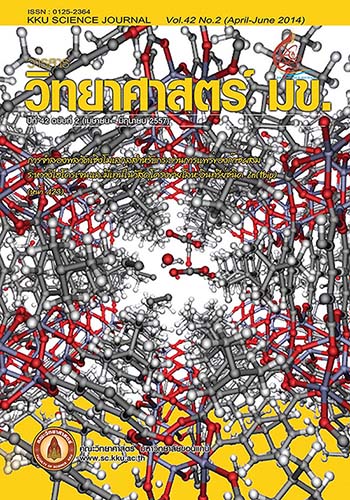Reduction of Earthy-flavour and Geosmin content in Frozen Thai Panga Fish (Pangasius sp.) Fillets
Main Article Content
Abstract
Thai Panga fish (Pangasius sp.) is promoted as an economic freshwater fish in Thailand. Geosmin (GSM) caused an earthy odour which was unacceptable to consumers. The purpose of this study is to compare the effects of ozone, banana leaf ash or sodium chloride solutions (NaCl) on reducing GSM off-flavor and quality acceptance of Thai Panga fish fillets after one frozen-thawed cycle. The preliminary study showed that the freshness of fish is acceptable to assessors. Proximate chemical and nutritional evaluations were presented as follows: pH 5.98, TVB-N (4.85 mg-N/100g), Omega-3 (173 mg/100g), Omega-6 (831 mg/100g), Omega-9 (2,536
mg/100g), and without trans fatty acid. The Thai Panga fillet samples were defrosted at a temperature <15°C. The fish were single fillets to ensure that the fatty tissue of the fish (where off-flavors are most likely to deposit) was still attached. Sub-samples of Thai Panga fillets were spiked in several spots with a syringe just underneath the skin with 200 ng/L of the standard GSM solution. It was then placed into a PE-plastic Ziploc bag and frozen for at least 12 hours at -21oC. After the Thai Panga fish fillets were exposed to ozonated water (200 or 400 mg/L), banana leaf ash (3% or 5% w/v) or sodium chloride (3% or 5% w/v) solutions, all treated samples including the control sample were analyzed for GSM by SPME-GC/MS analysis. The results showed that in all of the treatments (pH 6.54-6.93) there was no detection of the GSM content by SPME-GC/MS in all samples, which corresponds to the scoring test by assessors that all interaction treatment effects could not be detected for the GSM off-flavour when cooked by microwave, except the fish fillets contacted with 3% NaCl which had slightly GSM off-flavour (4.27). In addition, the 9-point hedonic scale sensory evaluation by trained assessors presented that all treatment and /or interaction effects displayed fairly to very good acceptibility.
Article Details

This work is licensed under a Creative Commons Attribution-NonCommercial-NoDerivatives 4.0 International License.


